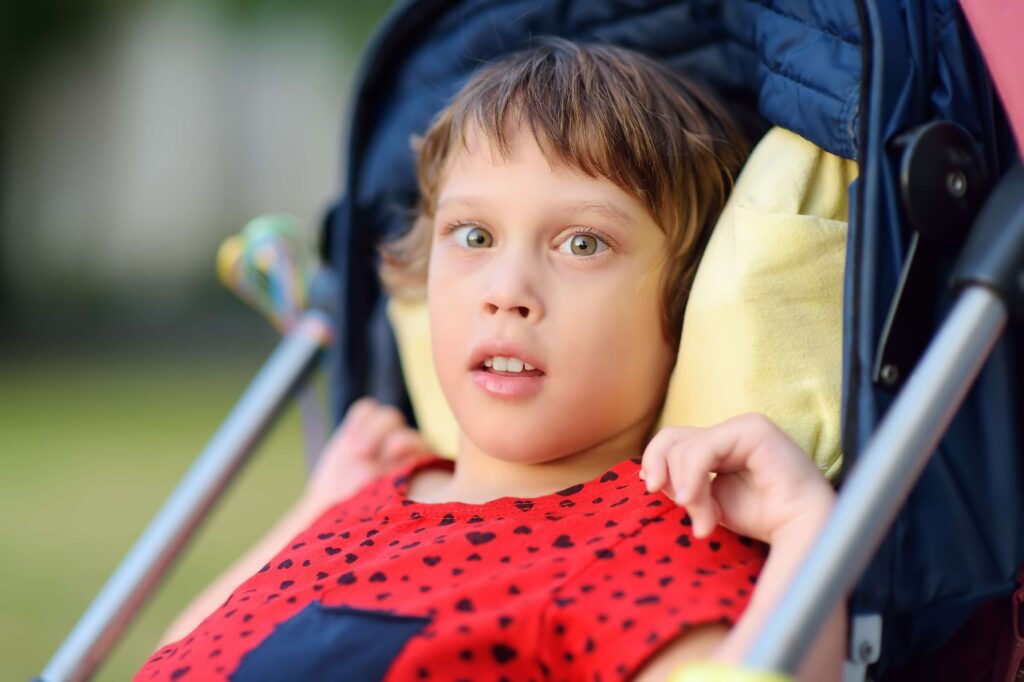Cerebral Palsy (CP) is a permanent disability arising from abnormal development of the brain, or damage to the developing brain before, during, or following birth. The word cerebral refers to “of the brain,” and palsy means paralysis. It is one of the most debilitating congenital disabilities, offering no cure and a significant impact on the lives of those affected.
CP related to brain damage that occurred before or during birth makes up a majority of CP cases (85%–90%). In many cases, the specific cause is unknown and unavoidable, but a few of the risk factors for congenital CP are capable of being managed or avoided.
RISK FACTORS FOR CEREBRAL PALSY
The risk factors found to increase the likelihood of CP due to birth injury include:
- Premature birth
- Infections
- Maternal high blood pressure
- Jaundice
- Kernicterus resulting from ABO or Rh blood type difference between the mother and baby
- Blood clotting
- Loss of oxygen or blood flow to the brain of the baby
- Negligent medical care, during prenatal, delivery, or infanthood terms
Some of these risk factors/injuries that cause CP are preventable. Typically, they are the result of improper medical care, and include but are not limited to:
- Failure to detect infection or other maternal complications
- Adverse effects from drugs or surgery
- Asphyxiation (lack of oxygen) to the baby during a long or difficult delivery
- Negligent monitoring of heart rate or failure to recognize fetal distress during delivery
- Performing an inadvisable cesarean section
- Negligent use of delivery instruments, such as forceps and vacuum extractors
- Failure to detect umbilical cord problems
- Gross mismanagement of delivery procedure
- Failure to treat severe jaundice
FOUR CATEGORIES OF CEREBRAL PALSY
According to the CDC, there are four basic categories of cerebral palsy:
- Spastic Cerebral Palsy: The most common, affecting roughly 80% of those diagnosed with CP. People with Spastic CP have increased muscle tone, and as a result are stiff and have difficulty with movement. It is usually categorized depending on what area of the body is impacted.
- Dyskinetic Cerebral Palsy: Involves complications with controlling the movement of hands, arms, feet and legs, making it difficult to sit and walk. Sometimes the face and tongue are affected, and the person has a difficult time sucking, swallowing, and talking. Their muscle tone can change frequently, even within a single day.
- Ataxic Cerebral Palsy: Relates to problems with balance and coordination. Those affected might be unsteady while walking, or have a difficult time with agility or activities that require a lot of control, like writing.
- Mixed Cerebral Palsy: Pertains to those who have symptoms of more than one type of CP. The most common type of mixed CP is spastic-dyskinetic CP.
IF YOU THINK YOUR CHILD HAS CEREBRAL PALSY
Speak with your practitioner and/or get them an evaluation with a Cerebral Palsy specialist as soon as possible.
If your child is:
- Not meeting normal development milestones
- Walking abnormally
- Having difficulty with motor skills or sitting up
- Having difficulty with communication
…you may be noticing early warning signs. While CP can be difficult to diagnose early on, the earlier a diagnosis is made and treatment begins, the better outlook your child has for the future. These cases, like all other personal injury cases, have a statute of limitations, which is a rigid limit on the amount of time a plaintiff has to file a lawsuit. Medical malpractice cases are limited to three (3) years from the date the occurrence which gave rise to the action, which is usually the date the medical negligence occurred. Therefore, it is imperative that you seek help right away.
Being awarded compensation for CP caused by birth injury is not a simple task; it is a complex and arduous process, and will require the help of experienced birth injury attorneys from the onset. As a part of a medical malpractice claim related to birth negligence, our Cerebral Palsy and birth trauma attorneys will focus on obtaining you the award you deserve, including but not limited to:
- Medical bills: past, present and future
- Prescriptions
- Therapies and related expenses
- Lost wages (past, present and future) for both the parent(s) and child
- Medical and/or assistive equipment.
- Related educational expenses
- Emotional pain and suffering
If your loved one has been diagnosed with Cerebral Palsy, contact our skilled birth injury attorneys today for a free evaluation of your case.
